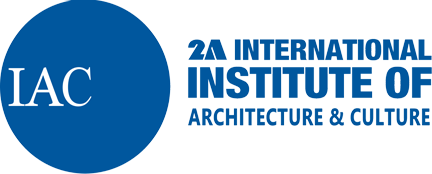2A International Institute of Architecture & Culture
The purpose of the 2A International Institute of Architecture & Culture (2AIIAC) is to advance the quality of architectural education and also to promote the quality of architecture in the world. The Institute provides a forum for generating information on aspects of architectural education and architectural research.
The Institute plans to build a network in the field of education, fostering discussions, exchanges, and a common policy in 2A’s activities to advance the quality of architectural education.
Architects have a particular social responsibility since architecture is an art with social obligations and applications. This understanding of architecture has characterized the international activities of 2A Magazine for over 17 years and has earned professional recognition worldwide in regard to architectural feedback and advantages.
Based on the program, 2A International Institute of Architecture & Culture teaches architecture in dialogue and talks about the needs of architecture and the architects. it is a process of feedback, in which the parties involved display a mutual interest in and influence each other.
The schooling and training at the Institute (2AIIAC) are based on such a dialogue in the design process. This approach assumes that the architect represents society and not himself.
Working together with fellow students from all over the world gives 2AIIAC students an opportunity to tackle these issues directly.
These also are interpreted and summarized here as needs for:
I. “contextualizing” architectural models of education with the proper knowledge of regional history and relevant critical tools.
II. “connecting” between educational fields concerned whit the built environment to allow cross-disciplinary reflections on issues of sustainability and social relevance.
III. “linking” education to industries and the emerging material culture including cutting-edge digital tools.
Revising curricula to integrate the above needs will allow students to critically reconceptualize the design of the built environment in relation to the emerging material and social culture of the region.
Education will thus better prepare students to fulfill their roles as proactive social and environmental players who can successfully bridge social and commercial concerns while respecting the historical and environmental contexts they operate in the 2A Institute will help expand offered views and insights benefiting educators, and students and professionals of extended Asia.
